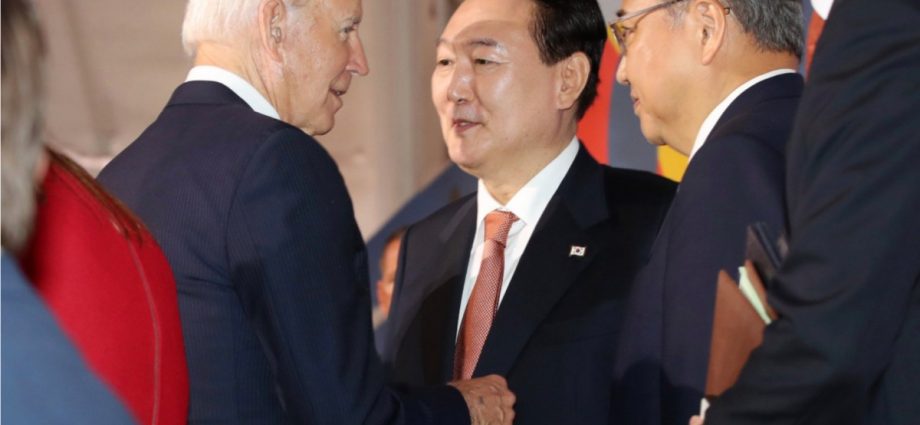SEOUL – North Korea lit up Sunday’s (September 25) dawn skies by test-firing a short-range ballistic missile into the Sea of Japan off the divided peninsula’s east coast.
While Pyongyang has not released any official statement over its action – which could be considered a routine military drill – the timing suggests it is a greeting, North Korea-style, to an US aircraft carrier that docked at a South Korean naval base on Friday.
The launch could also have been an advance signal to US Vice President Kamala Harris, who is due in South Korea next week as part of an Asian tour centered around her visit to the September 27 state funeral of murdered ex-premier of Japan, Shinzo Abe.
The short-range ballistic missile, launched at 6: 53 am, flew some 600 kilometers at a top speed of Mach 5, according to South Korea’s Joint Chiefs of Staff (JCS), Yonhap News Agency reported.
North Korea is banned by UN Security Council (UNSC) sanctions from possessing ballistic missile technologies but routinely defies the sanction by test-firing its extensive armory of the weapons.

Despite having UNSC backing, the international community has proved impotent at halting Pyongyang’s frequent tests. And today’s South Korean-US response was lifted from a well-worn playbook.
Post-launch, South Korea’s JCS Chairman held discussions with the senior US general in South Korea on their “combined defense posture against any North Korean threats and provocations, ” Yonhap noted.
North Korea has been engaged in its most intense year of missile testing ever in 2022, though it has refrained to date from conducting nuclear tests.
US-North Korea – and collaterally, intra-Korean – dialogue has essentially been frozen since then-US president Donald Trump walked out of a summit with North Korean leader Kim Jong Un in Hanoi, Vietnam, in February 2019. That nixed a promising but shortlived procedure for tier-1 diplomatic engagement with Kim.
Subsequently, US President Joe Biden displayed none of Trump’s enthusiasm for meeting Kim, while conservative South Korean President Yoon Suk-yeol, who took office in May, has adopted a far more hardline stance than his predecessor, Moon Jae-in.
Under Trump and Moon, South Korean-US military drills were halted or downsized in order to give diplomacy “space to work” – and then by Covid-19. They are now right back on.
In this context, the visit to South Korea Friday of the carrier strike group centered around the USS Ronald Reagan has won a high profile. Joint naval drills involving the carrier are scheduled for next week.
Nonetheless it is not just the two democratic allies who are flexing muscle. North Korea is engaged within an arms buildup – notably of missiles of various types – and is updating its usage doctrine.
Earlier this month, the state passed a new law enabling its military’s “automatic” use of nuclear weapons in the event its leadership is incapacitated. That looks like a counter to its southern, non-nuclear competitor’s “kill chain” doctrine, which calls for taking out the northern leadership and/or its command and control nodes with precision weapons and commandos.

Moreover, some North Korea watchers expect the state – which has refrained from detonating a nuclear device since 2017 – to conduct soon a tactical nuclear test.
Thus far, the North’s nuclear tests have all been of strategic devices, backed by the development of huge, intercontinental ballistic missiles as delivery systems that put the united states mainland within strike range.
Tactical nukes consist of fewer kilotonnes than strategic devices. North Korea’s foreseen use would likely be against military and or logistic targets – ports, airports, roads and rail hubs – on/around the peninsula.
Tactical warheads can be delivered via long-range tube artillery or the type of short-range missiles North Korea has been developing. If tested and deployed to frontline units, this new capability would present an unwanted new challenge for South Korean and US forces.
Follow this writer on Twitter @ASalmonSeoul

